Dinner Is Done And Serious Dancing Begins (Page 3)
Did you know? - The salute itself was carried out with the Queen Mary blowing her one working air horn in response to the Queen Mary 2 blowing her combination of two brand new horns pointing forward and an original 1932 Queen Mary horn (donated by the City of Long Beach) aimed aft. The Queen Mary originally had three whistles tuned to 55 Hz, a frequency chosen because it was low enough that the extremely loud sound of it would not be painful to human ears.
Modern IMO regulations specify ships' horn frequencies to be in the range 70-200 Hz for vessels that are over 200 meters (660 ft) in length. Traditionally, the lower the frequency, the larger the ship. The Queen Mary 2, being 345 meters (1,130 ft) long, was given the lowest possible frequency (70 Hz) for her regulation whistles, in addition to the refurbished 55 Hz whistle on permanent loan. 55 Hz is the lower bass "A" note found an octave up from the lowest note of a piano keyboard. The air-driven Tyfon whistle can be heard at least ten miles away.
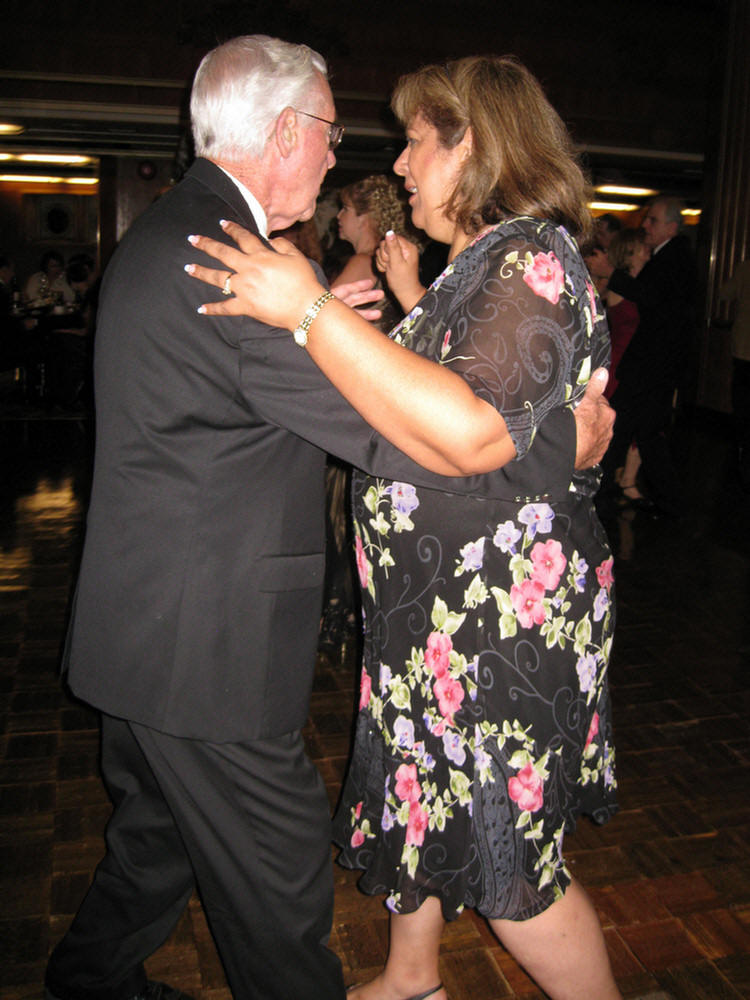
Time to dance off the dessert
Did you know? - Average calories burned per hour of dance:
POLE 290 calories per hour THE WINNER!
Disco 261 calories per hour
Salsa 261 calories per hour
General 261 calories per hour
Ballroom 203 calories per hour
Irish step 255 calories per hour

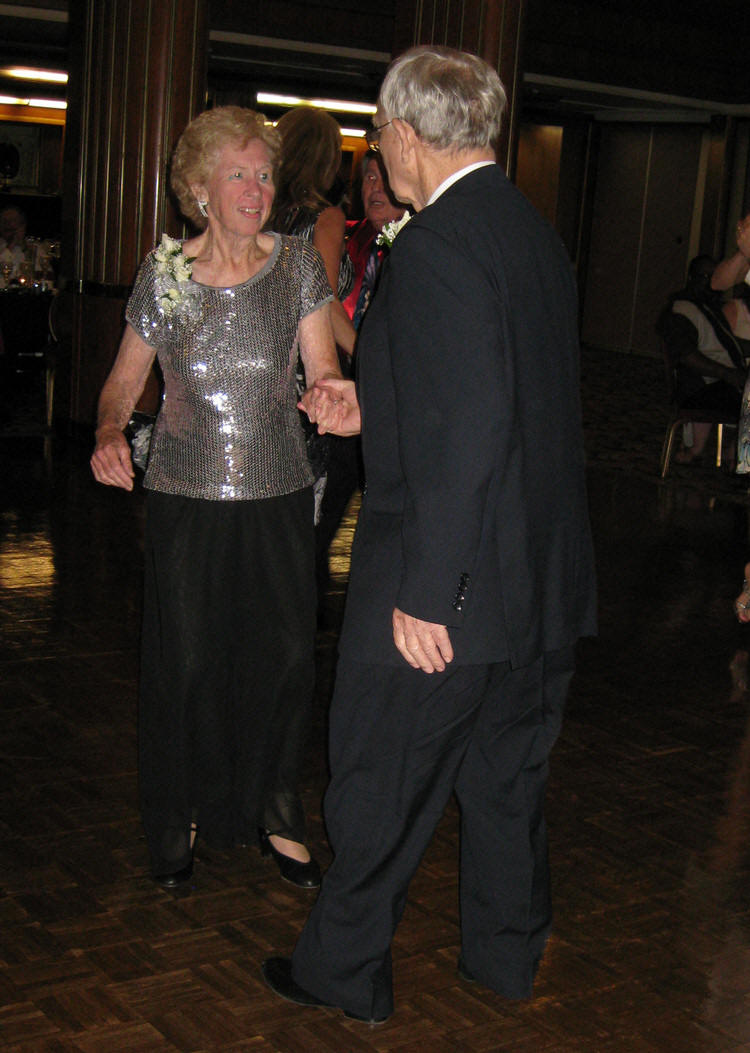


Go Barney go!
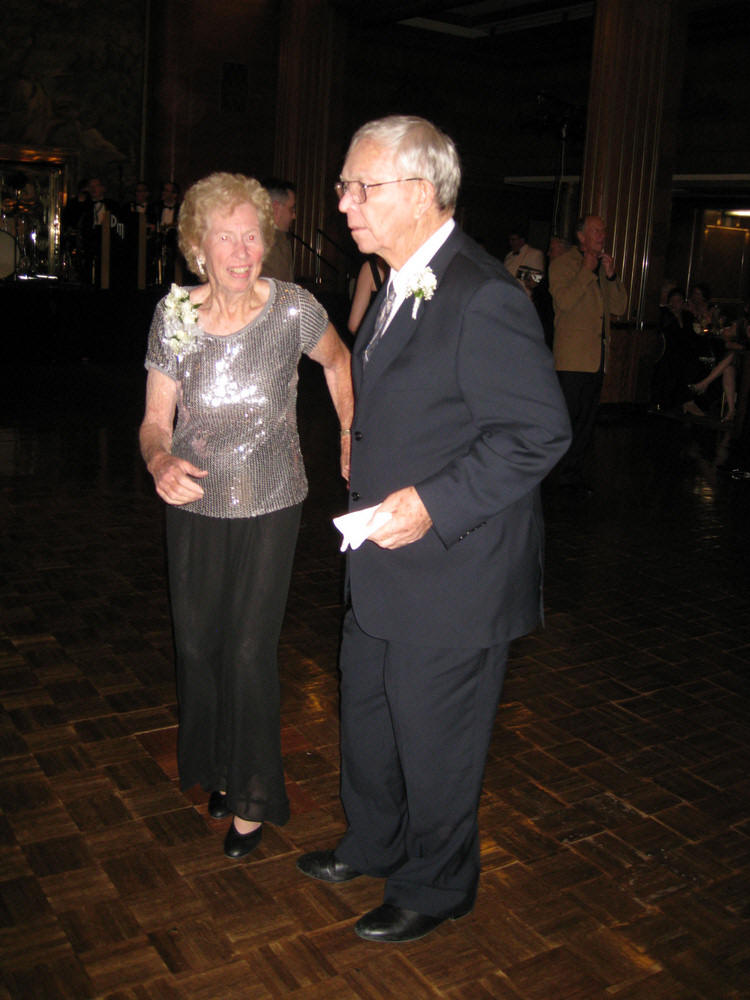
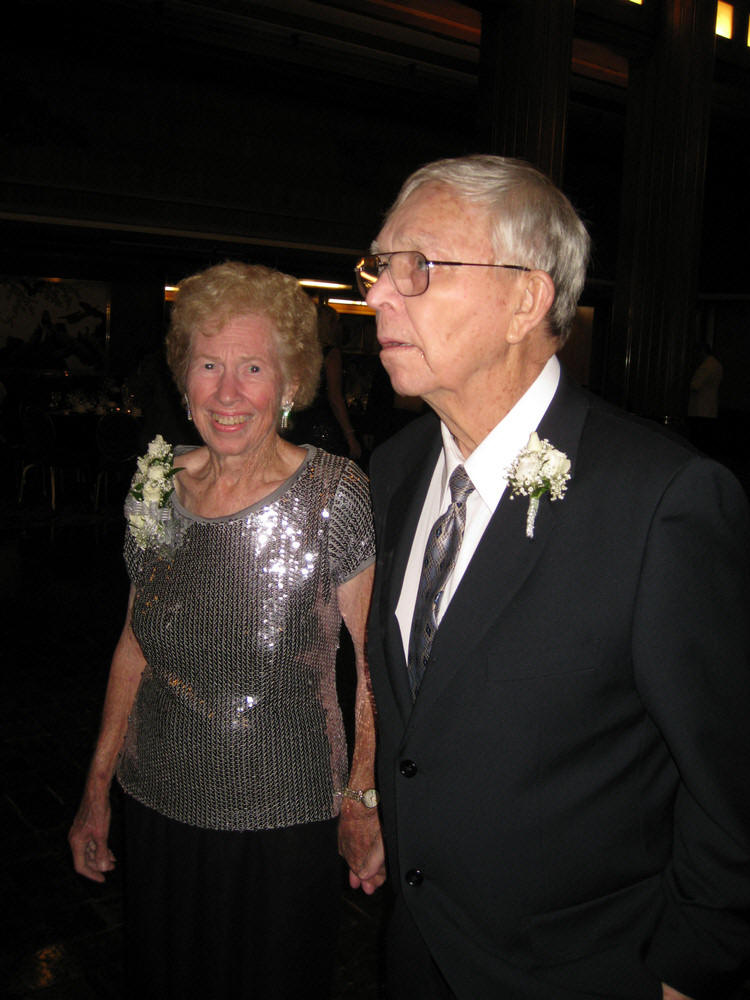

The Bandleader Announces The Anniversary And Plays A Balboa
Did you know? - Balboa today is commonly used as a general term for dances that come from southern
California during the 1920s and 1930s, which makes the history very obscure. Most of the original Balboa dancers have
passed and many of the swing dancers that followed continued to use their steps and sometimes styles to integrate into
their "swing" dancing which some people today call "Bal-Swing".
Balboa is a form of swing dance that started as early as 1915 and gained in popularity in the 1930s and 1940s. It is danced
primarily in close embrace, and is led with a full body connection. The art of Balboa is the subtle communication between
the lead and follow, like weight shifts, that most viewers cannot see. As a result, Balboa is considered more of a "dancer's
dance" than a "spectator's dance".
Balboa is danced to a wide variety of tempos. Because the basic step takes up such a small space, Balboa can be danced
to fast music (over 300 beats per minute). Balboa is also danced to slow music (under 100 beats per minute), which allows
more time for intricate footwork and variations.
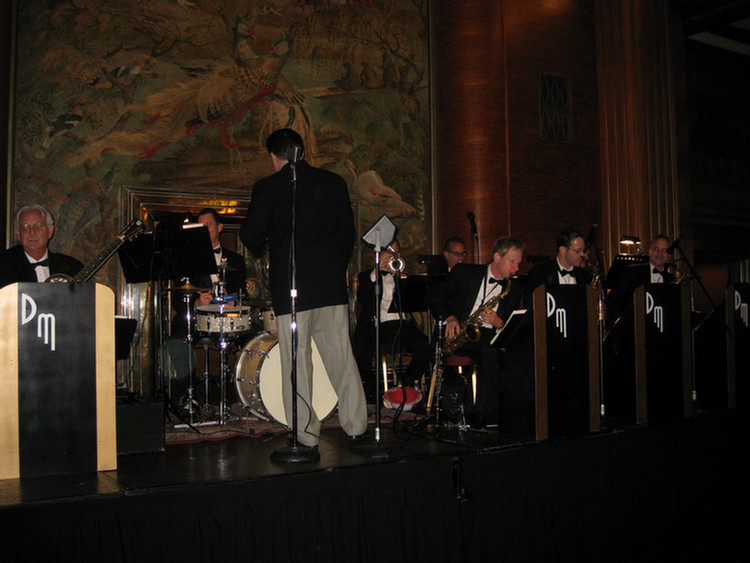
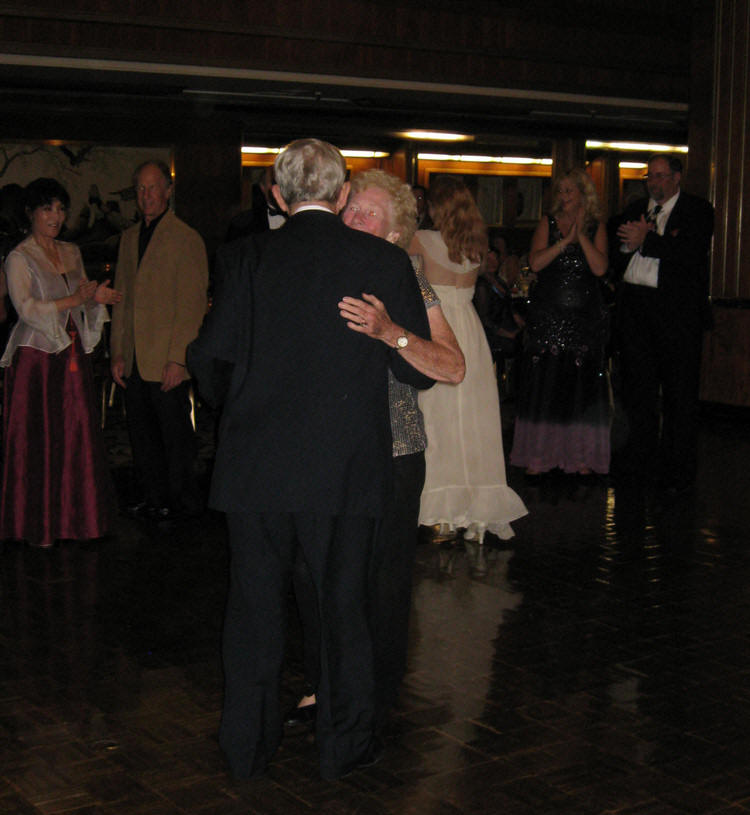
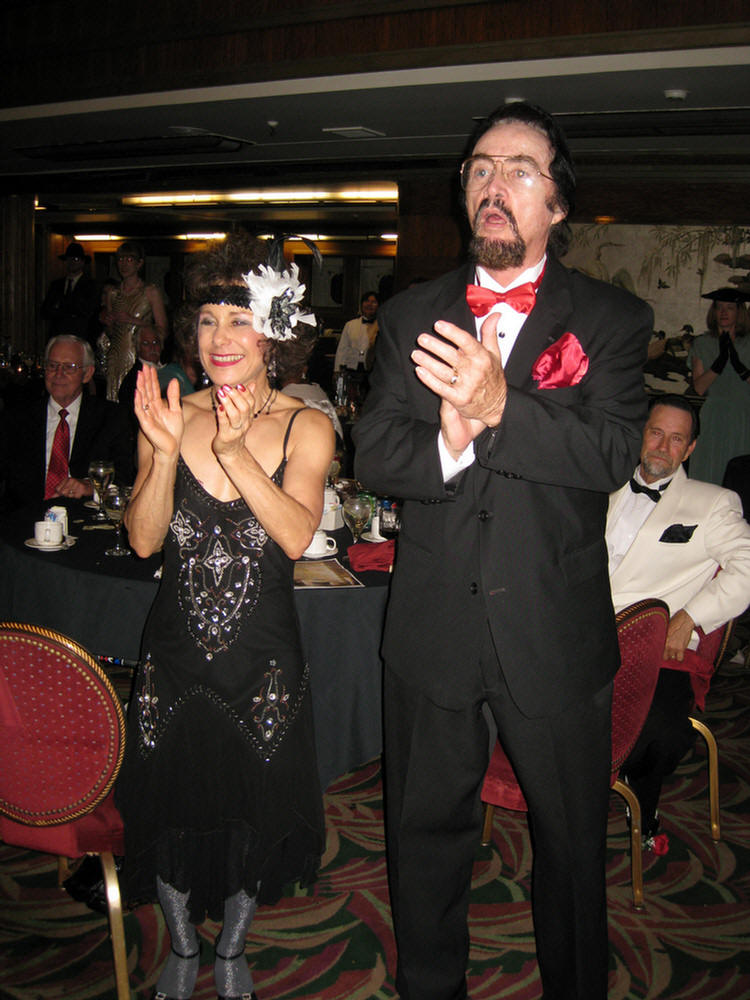
" I can't see their feet... Only a fuzz of shoes moving at 300 mph"


Yes, that is a tear in her eye... It was special to see two such nice people enjoying themselves
Did you know? - There are three kinds of tears. Basal tears used to wet the eyes, reflex tears resulting from irritation, and Crying/Weeping tears! The third category, generally referred to as crying or weeping, is increased lacrimation due to strong emotional stress, suffering, mourning, or physical pain. This practice is not restricted to negative emotions; many people cry when extremely happy. In humans, emotional tears can be accompanied by reddening of the face and sobbing—cough-like, convulsive breathing, sometimes involving spasms of the whole upper body.
Tears brought about by emotions have a different chemical make up than those for lubrication; emotional tears contain more of the protein-based hormones prolactin, adrenocorticotropic hormone, and leucine enkephalin (a natural painkiller) than basal or reflex tears. The limbic system is involved in production of basic emotional drives, such as anger, fear, etc. The limbic system, specifically the hypothalamus, also has a degree of control over the autonomic system. The parasympathetic branch of the autonomic system controls the lacrimal glands via the neurotransmitter acetylcholine through both the nicotinic and muscarinic receptors. When these receptors are activated, the lacrimal gland is stimulated to produce tears.

Everybody enjoyed their dancing
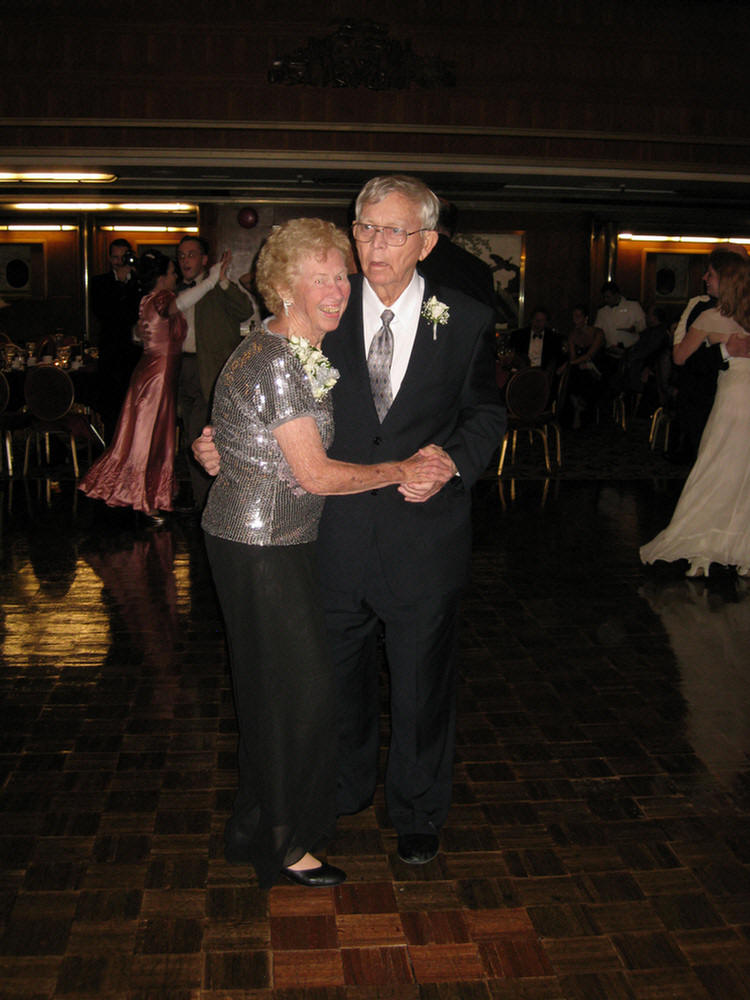

The Dancers Started To Filter Out Around 11:30; Not Us!
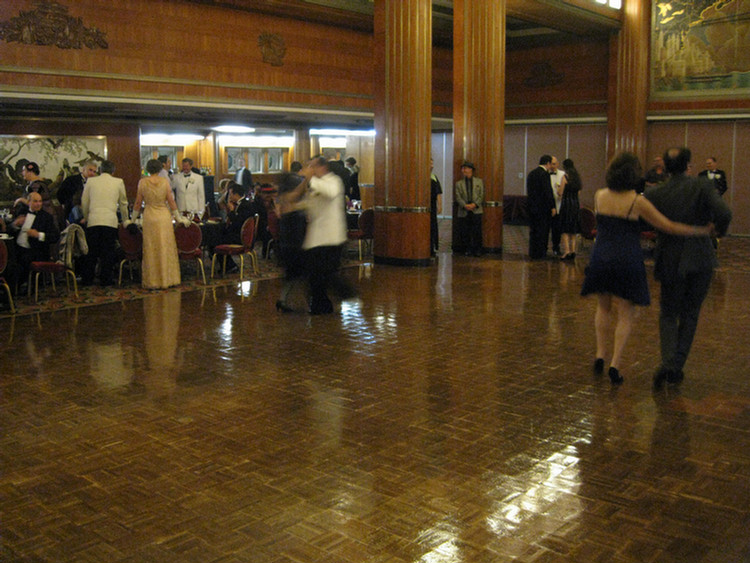
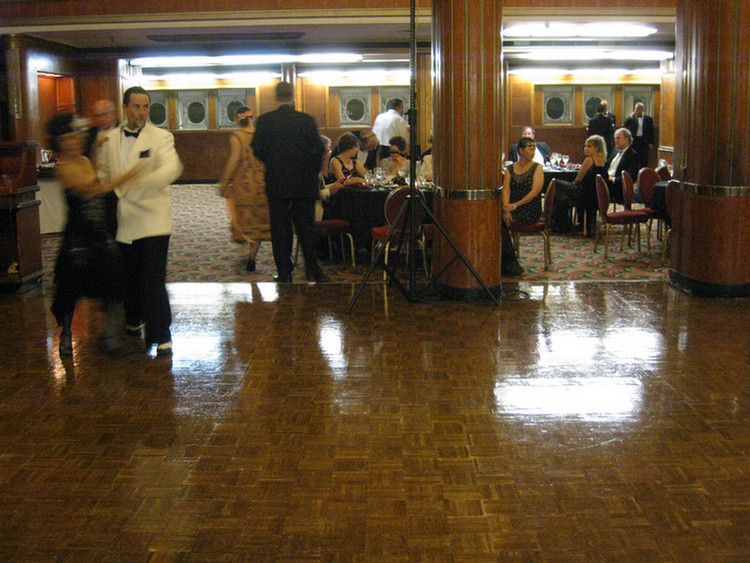
More room for us!

Keeping Track!
Did you know? - The first-class dining room featured a large map of the transatlantic crossing, with twin tracks symbolizing the winter/spring route (further south to avoid icebergs) and the summer/autumn route. During each crossing, a motorized model of the Queen Mary would indicate the vessel's progress en route.
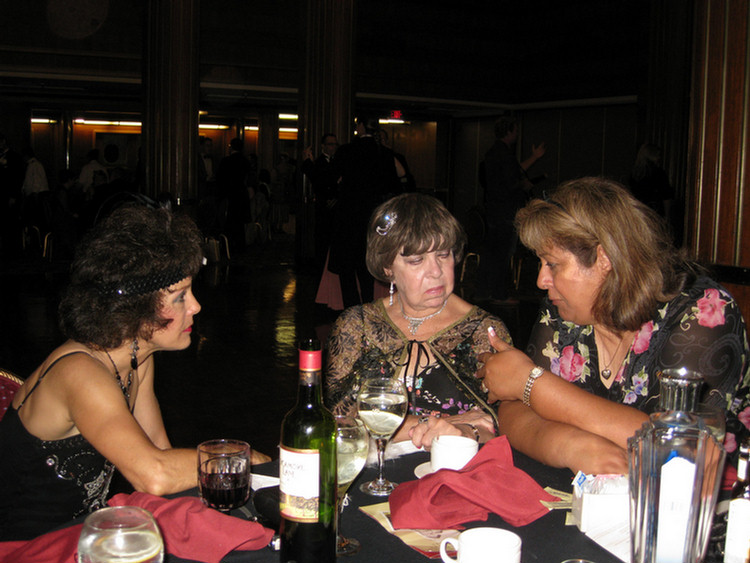
The girls get serious
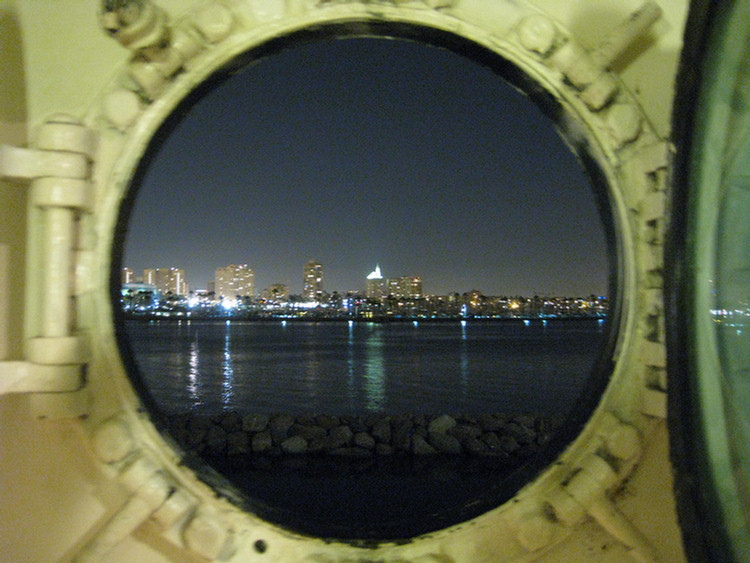
Hello Long Beach!
Did you know? - From September 1946 to July 1947, Queen Mary was refitted for passenger service, adding air conditioning and upgrading her berth configuration to 711 first class, 707 cabin class and 577 tourist class passengers. Following refit, Queen Mary and Queen Elizabeth dominated the transatlantic passenger trade as Cunard White Star's two-ship weekly express service through the latter half of the 1940s and well into the 1950s. They proved highly profitable for Cunard. But in 1958, the first transatlantic flight by a jet began a completely new era of competition for the Cunard Queens. On some voyages, winters especially, Queen Mary sailed into harbor with more crew than passengers. (But she and her sister Queen Elizabeth still averaged over 1000 passengers per crossing into the middle 1960s.)

It was a delightful evening with the temperature about 73 degrees at 11:30
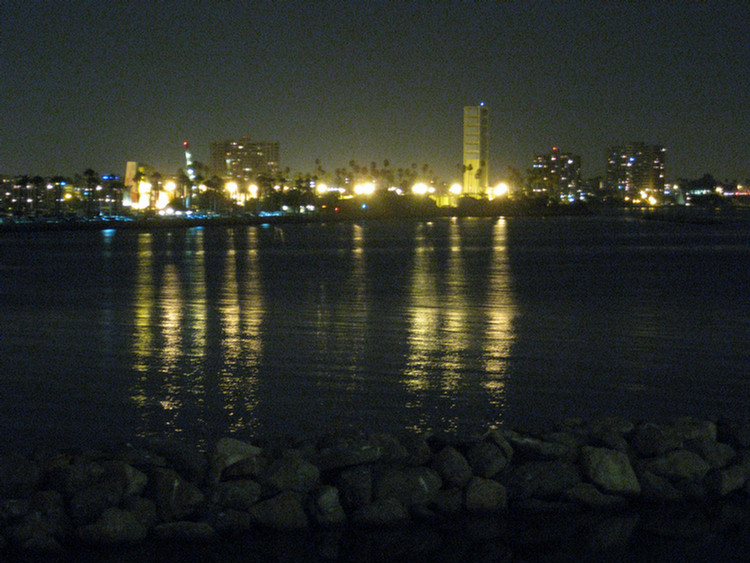
Ready for a midnight swim?
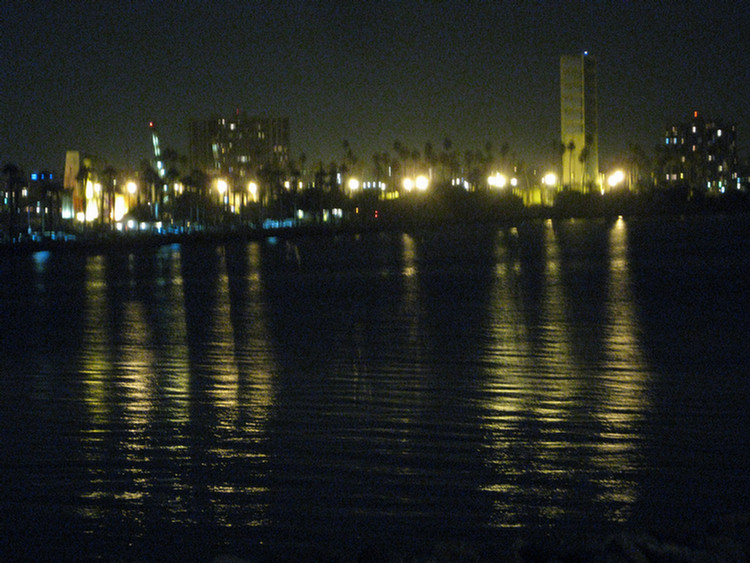
Yes... We can do it... Oops, where have I heard that before??
All Quiet
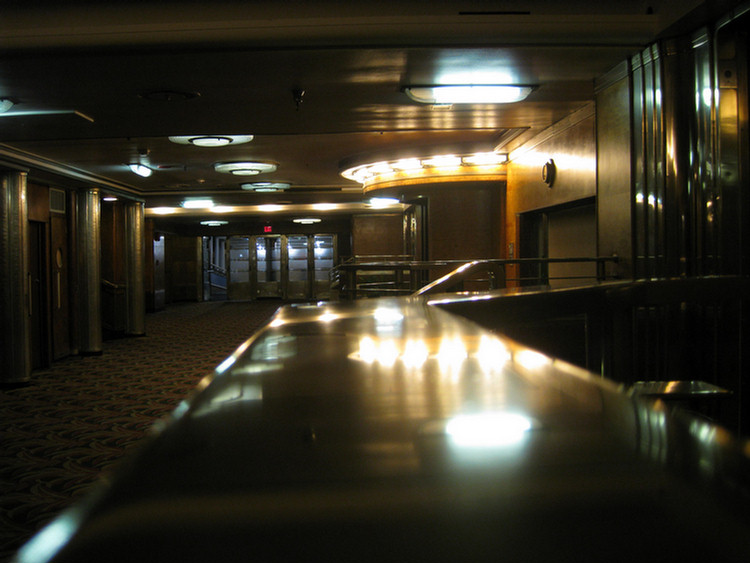
The dramatic entrance into the dining areas
Did you know? - Art Deco was an opulent style, and its lavishness is attributed to reaction to the forced austerity imposed by World War I. Its rich, festive character fitted it for "modern" contexts, including the Golden Gate Bridge, interiors of cinema theaters (a prime example being the Paramount Theater in Oakland, California) and ocean liners such as the Île de France, the Queen Mary, and Normandie.
Art Deco was employed extensively throughout the United States' train stations in the 1930s, designed to reflect the modernity and efficiency of the train. Art Deco made use of many distinctive styles, but one of the most significant of its features was its dependence upon a range of ornaments and motifs.
The style is said to have reflected the tensions in the cultural politics of its day, with eclecticism having been one of its defining features. In the words of Scott Fitzgerald, the distinctive style of Art Deco was shaped by 'all the nervous energy stored up and expended in the War'.
Art Deco has been influenced in part by movements such as Cubism, Russian Constructivism and Italian Futurism, which 'are all evident in Art Deco decorative arts'.

Where the part started
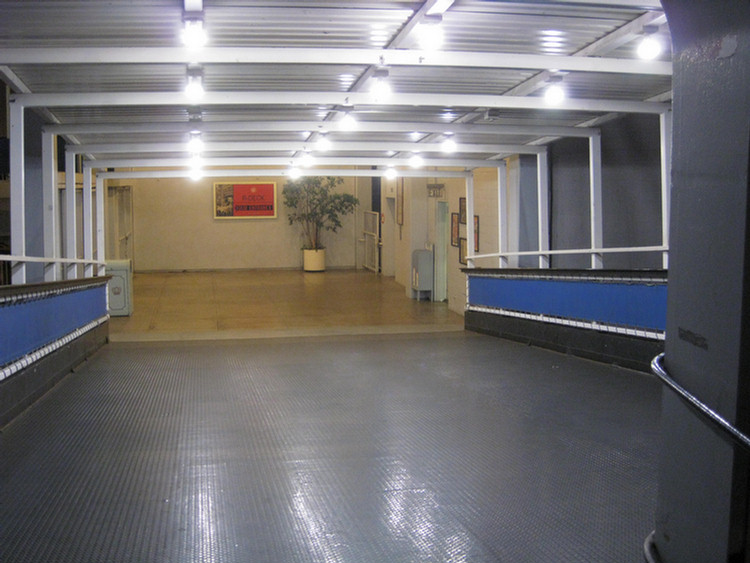
From 1930's to 1990's in one step
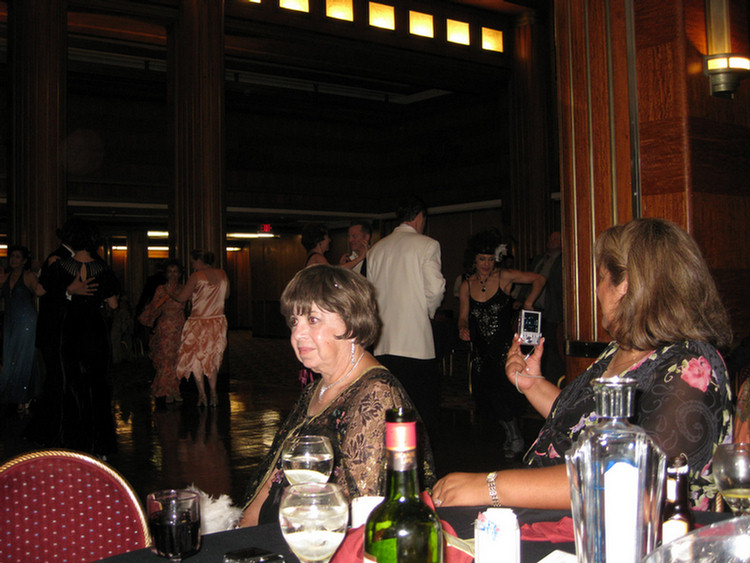
The dancing continues

These are X-Ray glasses... It does no good to turn around either

Goodbye for the evening.. See you next year

Everybody was happy
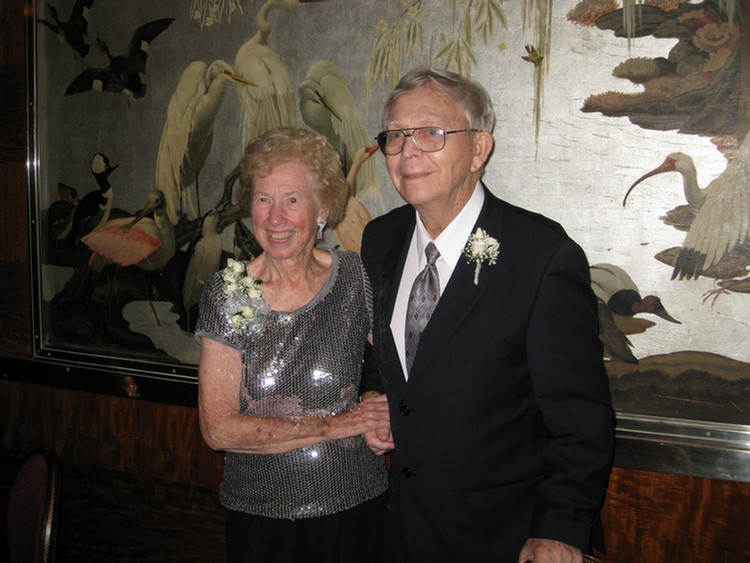
Great backgrounds
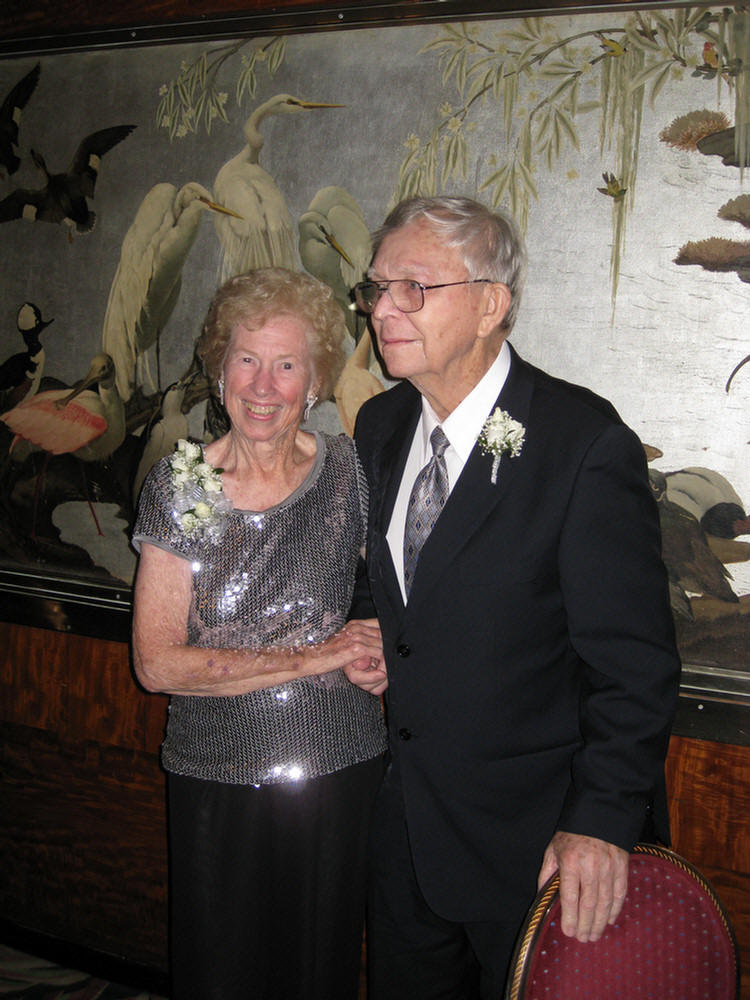
Good night guys... See you next year
Did you know? - RMS Queen Mary is a retired ocean liner that sailed the North Atlantic Ocean from 1936 to 1967 for the Cunard Line (then Cunard-White Star when the vessel entered service). Built by John Brown and Company, Clydebank, Scotland, she was designed to be the first of Cunard's planned two-ship weekly express service from Southampton to Cherbourg to New York, in answer to the mainland European superliners of the late 1920s and early 1930s. After their release from World War II troop transport duties, Queen Mary and her running mate RMS Queen Elizabeth commenced this two-ship service and continued it for two decades until Queen Mary's retirement in 1967.
The ship is listed on the National Register of Historic Places, and is permanently berthed in Long Beach, California serving as a museum ship and hotel. The Queen Mary celebrated the 70th anniversary of her launch in both Clydebank and in Long Beach during 2004, and the 70th anniversary of her maiden voyage in 2006